Alpaca Wool
The alpaca is charming, gentle and responsible for producing some of the softest, most luxurious fibre found in nature.
Today, there are around 4 million alpacas – the majority living 3,000 to 5,000 metres above sea level in the Andes of Southern Peru. Alpacas live in a very harsh climate, where temperatures can fluctuate from minus 25 degrees at night to 25 degrees during the day.
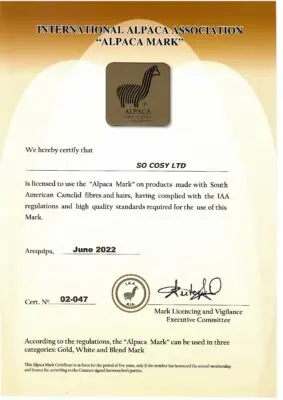
Why You Should Love Alpaca Wool
Super Soft
An alpaca’s fleece is sumptuously silky and smooth, due to the fibres being extremely fine and thin.
Hypoallergenic
Alpaca is the only fibre in the world that does not contain lanolin making it ideal for anyone with a wool allergy.
Warm & lightweight
Alpaca fibre is hollow, which makes it a great insulator. This lightweight product will keep you both warm in the winter and cool in the summer.
Durable
The structure of alpaca fleece makes it more hard wearing than other wool fibres, so you can rest assured your products will last for many years to come.
Minimal pilling
As opposed to sheep wool, alpaca fibres are smooth resulting in minimal pilling in all of our products.
Beautiful colours
Alpaca fleece is available in more than 20 subtle shades – more than any other natural fibre.
Dirt repellent
Alpaca fleece is dirt repellent and can tolerate daily use for many years whilst maintaining its appearance. If necessary, we recommend you wash your products in ‘Woolite’ or with your own hair shampoo.

Why So Cosy Chooses Peruvian Alpacas
The alpaca is a real treasure of Peru. It has learned to adapt to a habitat of extreme conditions. Living at an altitude of over 4,000 metres and temperatures of minus 25 degrees, the alpaca has developed a fleece with unique thermal properties that is soft yet strong and exceptionally beautiful due to its texture and range of natural colours.
So Cosy products are made using the highest quality alpaca fibres and combine the use of modern technology with the experience of Peruvian craftsmen.
Cashmere
Cashmere comes from the Kashmir goat and, due to a small and costly production process, is considered to be the most luxurious of natural fibres.
Why You Should Love Cashmere
Extremely soft
Cashmere is extremely soft. The softest wool is sourced from the Kashmir goat’s underbelly and throat.
Naturally beautiful
It comes in several natural tones – including white, grey and brown – and can be easily dyed. Cashmere is malleable enough to be woven into a variety of styles.
Gentle on skin
More recently, cashmere has become a popular fabric for loungewear due to its softness against the skin. It also has some natural stretch which makes it comfortable to wear and move around in.
Moist
Cashmere wool has a high moisture content which makes it able to adapt easily to temperature changes.
Loved all year round
This lightweight product will keep you both warm in the winter and cool in the summer.
Long lasting
Cashmere is extremely long lasting. When properly cared for, a cashmere throw such as So Cosy’s Tolone grey cashmere throw will last you a lifetime.
Why So Cosy Chooses Mongolian Cashmere
The world’s finest cashmere comes from Mongolian goats tended by nomadic herders. To withstand the bitter climate, cashmere goats not only have a fleece of thick long hairs, but also an undercoat of fine down.
Each spring, this down is combed out and unwanted long hairs, grease, dirt and faeces are removed. Each goat makes around three to four ounces of cashmere, which is enough to craft about half a sweater. Compare this to a regular sheep providing enough wool for three to four sweaters, and you can understand why cashmere is such an expensive material.
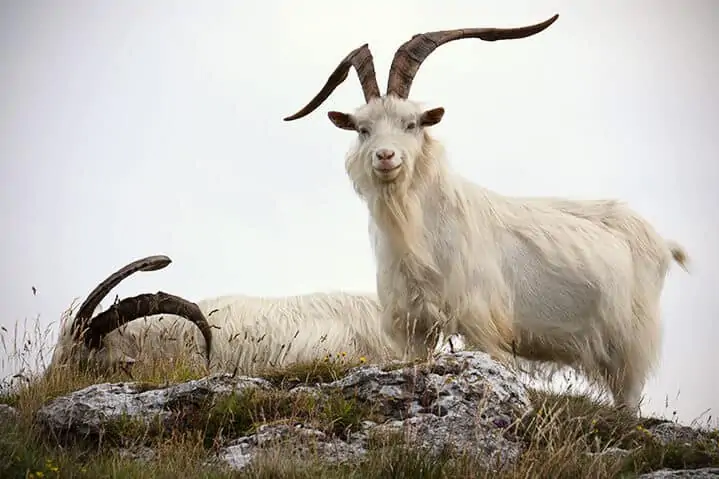
Lambswool and Pure New Wool Fibre
Lambswool is soft, elastic and slippery. In order to be classified as lambswool, fibres must be shorter than 50mm and sourced from the sheep’s first shearing at the age of seven months. Pure new wool comes directly from a living sheep and has not been treated, processed or woven before in any way.
Why You Should Love Lambswool and Pure New Wool
Soft & sumptuous
Both lambswool and pure new wool are known for their extremely soft and sumptuous feel.
Protective
Despite being supremely soft, these fine qualities provide excellent protection from the elements meaning you can use your lambswool and pure new wool creations from season to season.
Woolmark approved
The Woolmark brand is the world’s best-known textile fibre brand and provides consumers with an assurance of quality. The logo is available for companies to license and indicates that the product contains 100% pure new wool.
Insulating & breathable
Lambswool is an excellent insulator and ventilator, meaning it will keep you both warm in the winter and cool in the summer.
Durable & flexible
Lambswool is one of the most durable and flexible fibres found in nature.
Stain & static resistant
Wool fibres have a waxy coating making them naturally stain resistant. They’re also anti-static, collecting minimum dust for optimum cleanliness and breathability.
Naturally safe
Wool is not known to cause allergies and has natural disinfectant properties within its fibres. What’s more, recent developments now mean many wool products can be safely machine washed.
Why So Cosy Chooses Wool from Scandinavia and New Zealand
Sheep fleeces from these areas are softer and warmer due to the extremely bitter climates these animals live in.
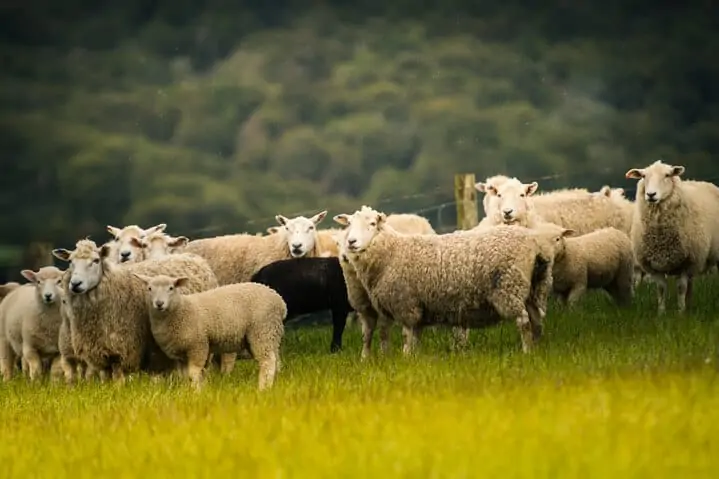
Merino Wool
Merino wool is one of the oldest and most versatile fibres known to man. It has also built a reputation for being the softest and finest wool of any sheep.
Why You Should Love Merino Wool
Natural
Merino wool is 100% natural, completely renewable and fully biodegradable.
Temperature regulating
It is exceptional at regulating body temperature, especially when worn close to the skin. Merino wool will warm you up quickly without causing overheating.
Insulating
Merino wool fibres will insulate you from the cold and keep you warm even if you’re damp or wet by drawing moisture away from the skin.
Odour resistant
Merino wool is naturally odour resistant and traps smells before they have chance to build up. With this, you can wear merino wool for longer without it emitting any questionable odours.
Great for layering
Merino wool is an excellent choice for layering, with its temperature regulating, naturally insulating qualities able to keep you warm and dry no matter where your day takes you.
Beautifully soft
Merino wool fibres are so fine you’ll be amazed by their softness. As a result, merino wool is gentle on the skin and a joy to wear.
Naturally safe
The perks of merino wool don’t end there. It’s naturally fire resistant and also offers SPF protection to safeguard you from the sun’s harmful rays.
Why So Cosy Chooses Wool from Scandinavia and New Zealand
Sheep fleeces from these areas are softer and warmer due to the extremely bitter climates these animals live in.
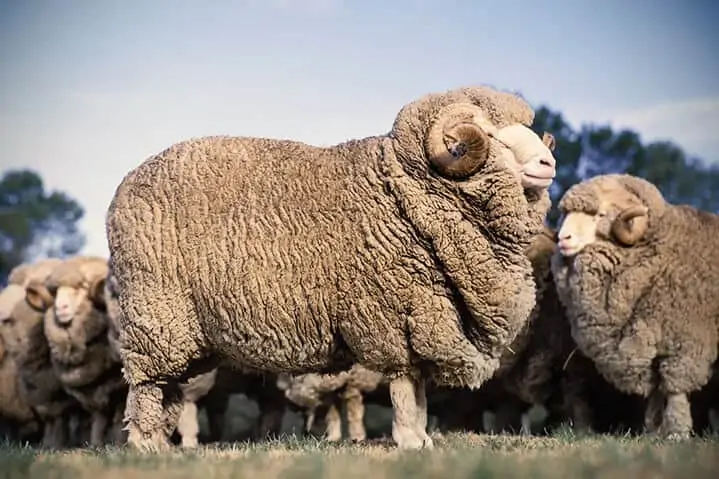
Introducing the jute plant
The jute we know and love is sourced from the stems of a tropical, Old World plant of the same name. These long, soft and shiny plants couldn’t be more different from the finished jute products that will arrive at your home. We’ll let WorldAtlas explain more about the jute plant in its most natural form:
“The jute plant, a native of the Indian subcontinent, is an herbaceous annual growing to a height of around 10 to 12 feet with a central cylindrical stem, and 4- to 6-inch long light green leaves and yellow flowers. The jute fibers are located beneath the bark, primarily concentrated near the woody, central parts of the stalk. The two species of the jute plant do not differ much except in terms of quality of the jute fibers, growing habits, and the shapes of their respective seed pods.”
The roots of the jute industry
Jute plants hail from Asia, and have been grown for centuries in the Bengal area of India, Bangladesh and Pakistan. Despite its tropical roots, the jute trade has a long history here in the UK.
From the 17th century, the British Empire’s links to India saw jute flow into the country thick and fast, as even then people began to realise the rewards of jute products. During the 19th century, jute was so popular that a factory in Scotland began trading and processing raw jute, and with this, the Dundee jute industry was born.
The Dundee based factory was owned by Margaret Donnelly, who was responsible for setting up the first jute mills in India. Thanks to Margaret, jute was being spun and weaved on home soil for the very first time.
The first jute products produced in Dundee left a lot to be desired however, but as time went on and experience grew finer fabrics used to make burlap or hessian were being lovingly crafted by Scottish locals. At one time, the jute industry was the city’s largest employer. The demands during the World Wars meant business boomed for the Dundee jute industry. After this, trade declined until the jute industry completely disappeared from Dundee.
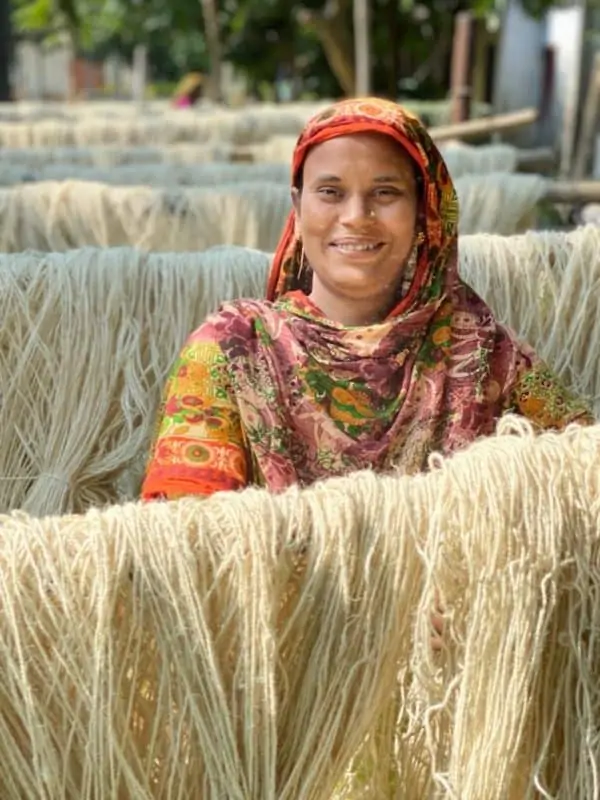
Why you should love jute
When some people think of jute, they think of twine, rope and burlap sacks. These days, jute’s durability, versatility and affordability, not to mention its super stylish designs, make this fibre an excellent home accessory choice in every room.
Jute isn’t just great for your home, it’s good for the planet. Jute is 100% biodegradable, highly sustainable and renewable. Jute plants are naturally cropped three times a year and require zero fertilizers or pesticides so they’re especially kind to the planet. Jute plants also need very little water, which in an era of water conservation is fabulous news!
Jute plants reduce pollution and clean the air too. Recent research revealed that amazingly one hectare of jute absorbs approximately 15 tons of carbon dioxide and emits 11 tons of oxygen during growing season.
Throw in the fact that woven jute is super soft and durable enough to withstand those little and big dramas at home (even years of muddy foot or paw prints), and you’re onto a winner with this wonder fibre.
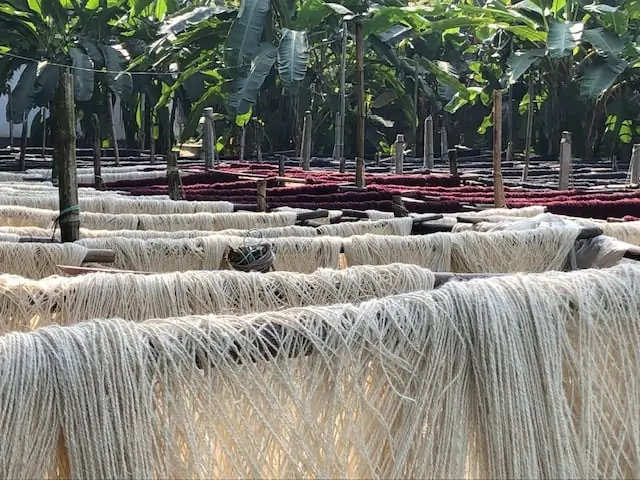
So Cosy’s jute story
Our jute homewares are all lovingly crafted in Bangladesh, a country where jute naturally grows. The factory we collaborate with has been doing what they do for some 30 years, and puts the welfare of their workers at the very top of their list of priorities.
Once the jute plants have been processed by their team, the yarns are dyed using the highest quality, EU standard dyes. Our jute products are nature’s best, but we choose not to use natural dyes. Whilst all dyed jute has a tendency to fade in sunlight, natural dyes would start fading almost immediately.
We use machines to dye our yarns and let nature do the rest with a quick dry in the fresh air. Then the creativity really kicks in! The stunning braiding that makes up our jute products is done by machines. While our rugs are sewn together individually like a coil of rope using a zig-zag sewing machine stitch.
We visit our jute factory as often as we can to ensure we’re always in the loop. We were actually there in December and organised a special picnic for the whole factory!
Find out more about why you should buy from us or go straight to the fun part by shopping our jute homeware collection now!.
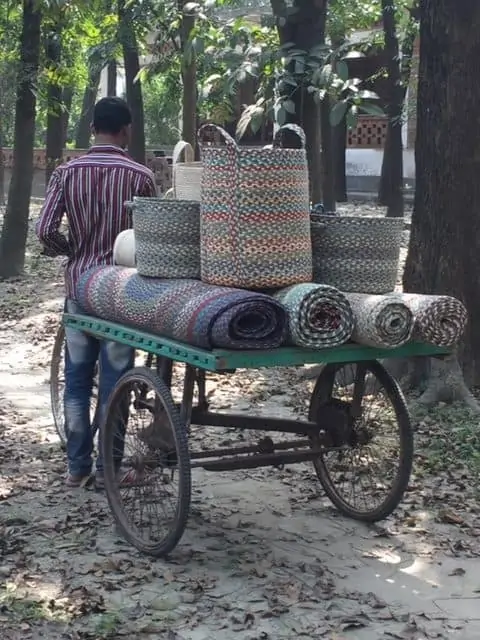
Recycled Plastic
Whilst far from natural, our use of recycled plastic throughout our Eco Rugs range is a fantastic choice for your home and the planet.
Why You Should Love Recycled Plastic
100% recycled
Plastic waste is a huge problem for the planet. By using 100% recycled plastic to craft our Eco Rugs, we’re doing our bit to reduce the burden placed on the world’s landfill sites.
Versatile
Our recycled plastic rugs can be used indoors or out to add a pop of colour and texture as well as a great underfoot experience to any space.
Supremely soft
Contrary to popular belief, recycled plastic is soft and comfortable underfoot, meaning you can enjoy every inch of this fabulous home accessory.
Durable & hard wearing
Recycled plastic is of course made to last. It’s also resistant to rot and mildew.
Low maintenance
Treat your recycled plastic rug just like any carpet. Our Eco Rugs can be simply spot cleaned and vacuumed. They’re even machine washable.
Super stylish
As well as being great for the planet, our recycled rugs are stylish additions to the home, garden or caravan.
Why So Cosy Chooses Recycled Plastic
It’s up to everyone to play their part in protecting the planet. With every sale of an Eco Rug we’re helping to combat plastic waste and providing a great, long lasting accessory for the home or garden.

Linen
Linen is a brilliant fibre that we are proud to work with here at So Cosy. Cultivated from the humble flax plant, linen is widely used throughout the world as a homeware, clothing textile or accessories choice, and for good reason.
Why You Should Love Linen
Moisture resistant
Thanks to its cellulose-based fibres and compact weave structure, linen naturally repels water. Whilst not completely waterproof, linen resists moisture and absorbs dampness to promote dryness and warmth.
Breathable
As well as being moisture resistant, linen enables the quick evaporation of water that allows you to stay at your freshest and coolest.
Hypoallergenic
Ultra-hygienic and naturally antibacterial, linen safeguards you from the harmful microorganisms that can trigger or worsen sensitivities, allergies or asthma.
Sleep promoting
Its moisture resistance, breathability and hypoallergenic nature all pave the way to better sleep quality and quantity.
Super sustainable
The flax plant that linen is made from is natural and fully biodegradable, with every part of the plant used in some way or another.
Durable
Linen is often considered the strongest natural fibre on the planet – in fact, it’s up to 30% tougher than cotton!
Low maintenance
Linen requires very little care. All it needs is a gentle wash and quick air dry from time to time to stay in tip top condition.
Silky soft
The appearance of linen is iconic. Whether ironed to a smooth, crisp finish or left relaxed and crumpled, every interior scheme can benefit from its silky soft feel and look.
Why So Cosy Chooses Linen
Based on the benefits mentioned above, why wouldn’t we! We stock and supply a range of stunning linen products from bedspreads to cushions.
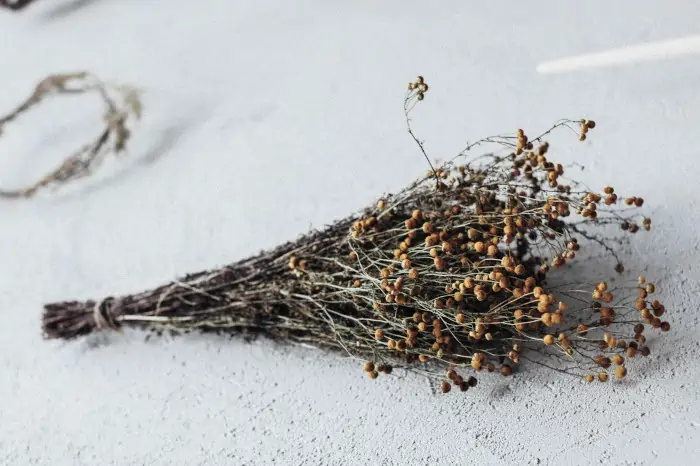
Hogla and Abaca
Both naturally sourced and beautifully crafted, our hogla and abaca homewares are stunning additions to any home.
Why You Should Love Hogla and Abaca
Natural
Hogla and abaca are naturally grown using 100% manual production processes, with creations even sundried to finish. This helps the planet and ensures unique, high quality products.
Renewable
As a waste product from banana plantations, the use of abaca is extremely resourceful and sustainable. Both hogla and abaca are also quickly renewable and biodegradable.
Super strong
Our hogla and abaca products are long lasting and highly durable, meaning they’ll be key parts of your interior scheme for years to come.
Easy to care for
Hogla and abaca may be strong but they should still be handled with care. Maintenance is however super simple, with staining easily spot cleaned and able to be touched up.
Expertly crafted
All our hogla and abaca products are expertly crafted by local artisans with a long running appreciation for these all-natural materials and a passion for weaving stunning homewares.
Timelessly rustic
Choose a home accessory that’s forever timeless by opting for one of our rustic, natural hogla or abaca products.
Why So Cosy Chooses Hogla and Abaca from Bangladesh and Indonesia
Our hogla baskets are made with love in Dhaka, Bangladesh. They’re crafted by rural artisans in modest yet ethically run workshops. Our abaca accessories on the other hand are sourced from sustainable pioneers in Central Java, Indonesia.
As well as producing our stunning abaca products, they specialise in crafting goods from other quickly renewable plants like water hyacinth and seagrass. They also use innovative methods to craft goods from recycled materials, including newspapers and cement bags.
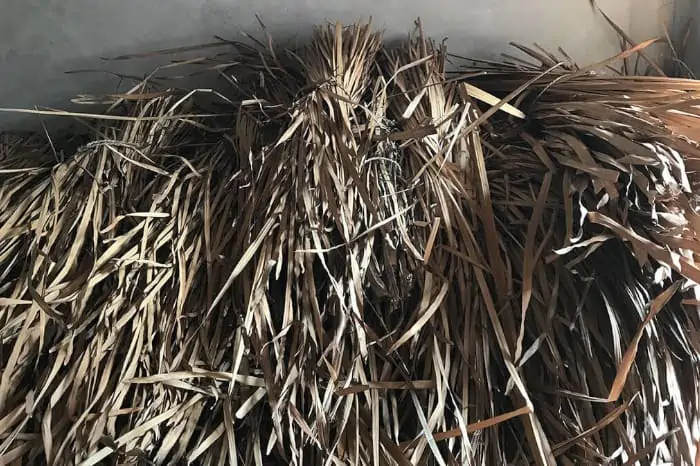
Teak Root Wood
From waste to wonder, our collection of teak root wood kitchenware is a great choice for modern and traditional schemes. Teak root wood is a natural material that unlocks a lot of benefits for the home and the planet too.
Why You Should Love Teak Root Wood
Eco friendly
Traditionally a waste product of teak plantations, teak root wood is extremely sustainable. This is only cemented by its mainly manual production process. By choosing teak root wood, you’ll be doing your bit to protect the planet’s forests.
Natural
Teak root wood is as natural as it comes. Our teak root wood kitchen accessories also use no glue to continue that natural theme further.
Durable
Despite being a waste product, teak root wood is a durable hardwood that can be relied on for the long run.
Food safe
All our teak root wood products are food safe meaning you can enjoy them every day in your kitchen.
Low maintenance
It doesn’t take much to maintain teak root wood’s natural beauty. Products simply wipe clean, although periodic refinishing with a food safe oil is recommended.
Expertly crafted
Each and every one of our teak root wood kitchen accessories has been hand crafted to ensure the very best quality and finish.
Why So Cosy Chooses Teak Root Wood from Indonesia
Our teak root wood homewares are all sourced from East Java in Indonesia. We work with an artisan workshop with a long tradition and passion for waste teak craft. Our makers source and hand pick their materials themselves before handcrafting with traditional hammer and chisel to create the beautiful accessories that end up in your home.
Working with independent artisans not only ensures the best products for you, but creates job opportunities for local people.
